People who know me closely also know that I am a bit of a watch guy. That’s right, I do have a great fondness for timepieces, especially mechanical ones. To me, they represent one of the few kinds of jewelry that are actually functional and serve an important purpose other than decoration. And if decoration is what you want, there are plenty of watches that can show that as well. Of course, watches, especially hand-made Swiss, German or Japanese ones, often represent amazing craftsmanship that is not only admirable but also aesthetic to see, whether on the dial or through the display back showing the movement.
I never leave the house without strapping on a watch, and it goes without saying, the same applies to traveling. But what are some of the criteria of a perfect travel watch? Here are some of my most important requirements that you might find useful, whether you are a watch person or not.
Forget the battery
First and foremost, I prefer watches that do not require a battery. Why? Because these little things tend to die when you least expect it, and missing a flight because you didn’t have a working timepiece would be a bitch. This, by the way, is the reason why you should not rely solely on your mobile phone to check time. Yes, those things often run out of power as well, not to mention the inconvenience of getting it out of your bag or your pocket every time you need to know what time it is. It applies to a smart watch, too. Sure, it’s got tons of features, and by all means, I’m not saying you shouldn’t own one, but I would not trust or rely on it in any kind of a do-or-die situation.
Majority of watches are so-called “quartz”, i.e. they do have a battery to drive the hands. But fortunately, there are plenty of watches that are automatic, i.e. with a mechanical movement with a special rotor that keeps the it wound by the motion of your wrist. That means that as long as you wear it daily, you will never need to wind it and it does not have a battery. Mechanical watches used to be synonymous with “expensive”, but fortunately, there are plenty of cheaper options nowadays, many of which are made by Seiko, like for example, their very affordable Seiko 5 line.
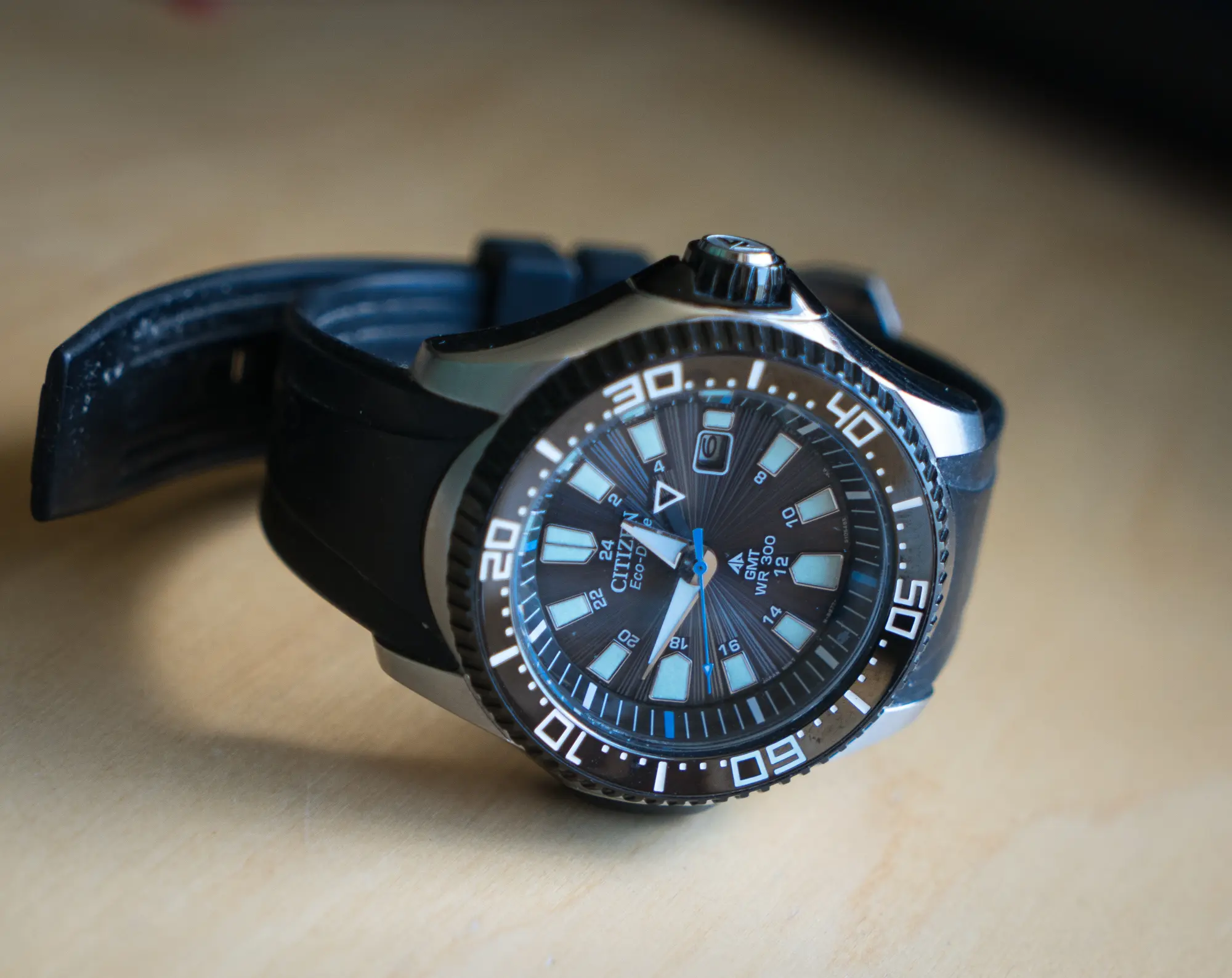
The other non-battery choice is the solar-powered watches. These timepieces do have a battery, but it gets a constant recharge via light energy, which means you do not need to replace the it as long as the watch is exposed to daylight. This technology is particularly well developed in the Citizen Eco-Drive line of watches, most of which are very affordable as well.
Know the time back home
When I travel, I often like to know the time back home, to avoid embarrassing phone calls to friends and relatives in the middle of a night or just to know if it’s someone special’s birthday yet or if you have to wait a few more hours with your congratulations.
Therefore, I prefer my travel watches with the so-called GMT complication. What it means is that your watch has a 24-hour hand in addition to your hour, minute and second hands. The 24-hour hand and your main hour hand should be independently adjustable, which would allow you to set them to 2 separate time zones – main hour hand for your local time at your destination, and the 24-hour hand for the time back home.
If you are a watch junkie like me you might know that there are two types of GMT watches – let’s call them conventional and “true” GMT. The conventional, and the much more common type means that you can adjust your GMT hand in 1-hour jumping increments, and your main hour hand adjusts regularly like in any other watch, by spinning your minute hand around the clock face without affecting the position of the GMT hand. That is how most GMT watches work, including the lower-priced options. It happens to be more suitable when you need to change your second time zone more often than your main time zone, thus being less convenient for traveling. An excellent example of such a GMT watch is this Hamilton Khaki.
“True” GMT watches have the main hour hand that can adjust independently of all other hands in hourly increments which makes such watches true travel time pieces. If you travel, say from New York to Tokyo, you wouldn’t have turn both hour and minute hands 14 times and then set your exact time for Tokyo, as with the conventional GMT. You would simply slightly pull out your crown, click your hour hand in 14 moves forward and voila, your time is set along with your date that will follow your new time. Yes, that’s how that complication works, and because it is more difficult to construct than the conventional method, only a handful of top-shelf brands have it. They include Rolex, Omega, IWC, Jaeger-LeCoultre, Patek Philippe and some high-end Seikos.
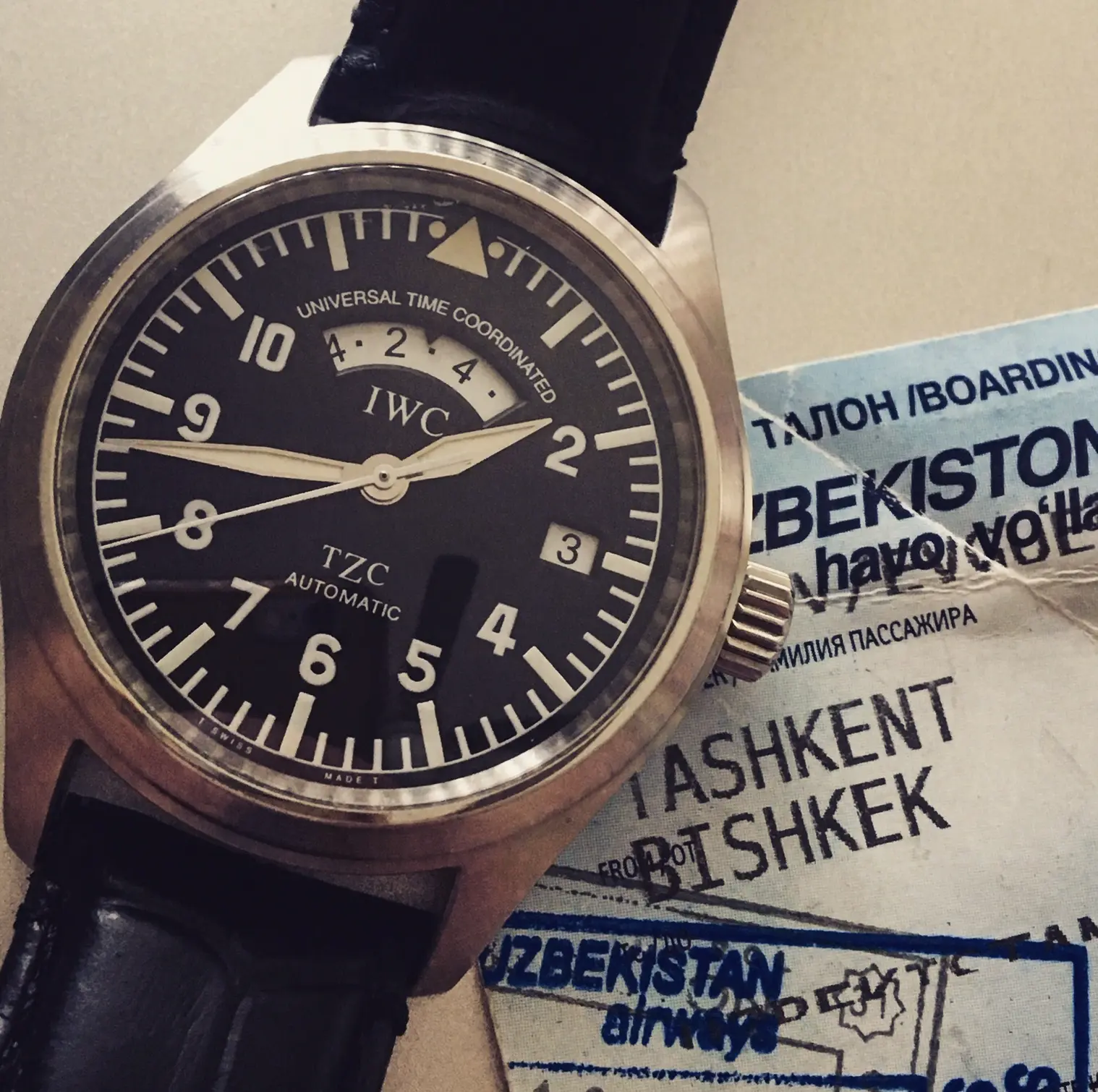
But even a conventional GMT complication will be more useful than none.
Take it for a splash
If your travel includes any proximity to the sea or even just a pool, you will need a watch that has at least a 100-meter water resistance if you are to take it in the water with you. Most watch makers set the minimum water resistance to 30 meters, but don’t be mislead by that number. In practice it means that it can withstand little more than a rain or an accidental splash when you wash your hands. 100m is pretty much the minimum water-resistance suitable for swimming.
There is a reason why the so-called diver watches are popular: all of them have a water resistance of 200m and above, they have a rotating bezel with minute markers which is great for keeping tracks for elapsed time such as your parking meter or laundry, and they can be easily worn for any kind of water sports. Plus they exude a certain vacation vibe even when you are back home and sit at your desk dreaming of your new destination.
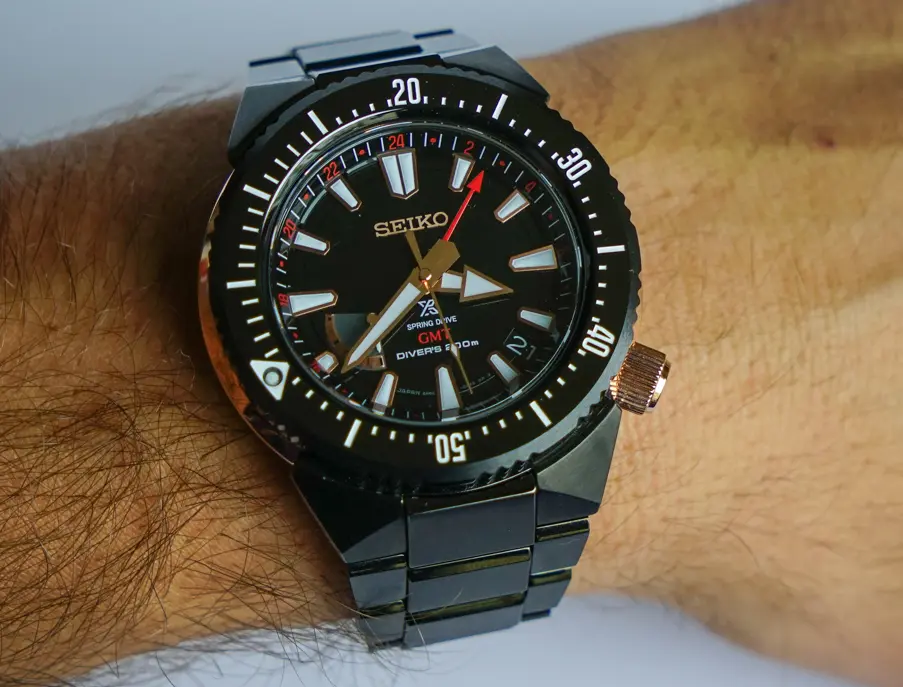
You don’t have to splash too much cash if you want a splash-resistant watch: Japanese manufacturers such as Seiko, Orient and Citizen all have options un the sub-$200 category. But if you want a mechanical diver-style watch with a GMT complication (and you do want it), your choices are somewhat limited. There are a few Hamiltons out there, as well as lesser-known brands such as Oris, Edox, Sinn or Aquadive. And when it comes to diver watches with the “true” GMT, you are really limited only to a handful of higher end Seiko models and a couple of discontinued Jaeger-LeCoultres. Citizen Eco-Drive has some affordable GMT divers, although they will be of the conventional kind.
Beat it around
Most diver watches are built to be quite robust, but even if you are not into diving watch look, which can sit quite large on your wrist, you should pick a watch that has a robust built and can withstand a beating. Yes, literal one – you never know when you are going to bang your watch on something sharp. Most watches mentioned above are going to be fine for that, but I should mention 2 criteria I personally like.
First, your travel watch material, most likely stainless steel or titanium, should not have a look that’s too shiny or polished. Choose a watch that is satin or brushed finish so that you wouldn’t have to worry about the inevitable scratches. Most of the watches from the Oris line-up fit the bill.
Second, your watch should be on a strap as bracelets often get most of the scratches and can easily become unsightly after you bang it around for a bit. If your watch comes on a bracelet, be sure you can take it off and change it for a durable travel strap, preferably NATO-style nylon or canvas. Leather straps look great but cannot be washed, and in the warmer, sweatier destinations, they will be rendered unwearable after a few weeks. The exception to these 2 rules would be any Casio G-Shock that has a solar-powered battery. Those beasts are virtually indestructible and feature sweat-resistant rubber straps.
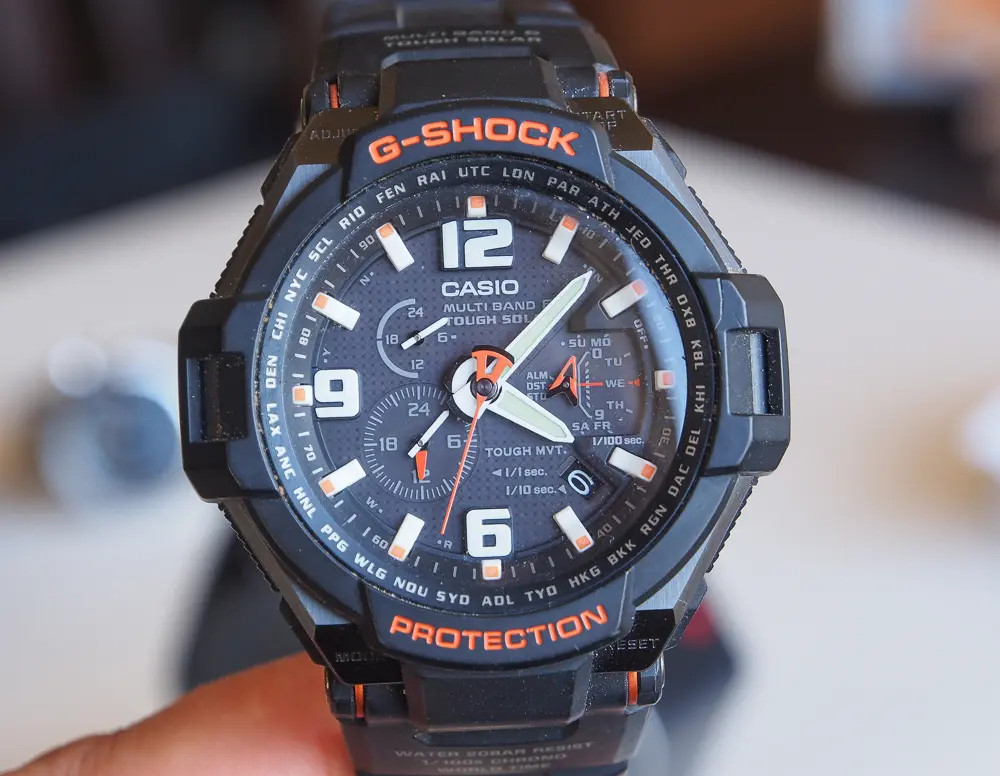
Don’t forget about the looks
Finally, with everything said above, you might think you have to stick to some ugly utilitarian tool watch for your travels. While I see nothing wrong with that notion as I find most watches beautiful, you should pick a watch that you first and foremost like on your wrist. Basically, it should look good on you, because lets face it, travel is not only for grinding it out and extreme outdoor adventures. There are times when you may want to accessorize a bit and look dapper, and your watch might help you out.
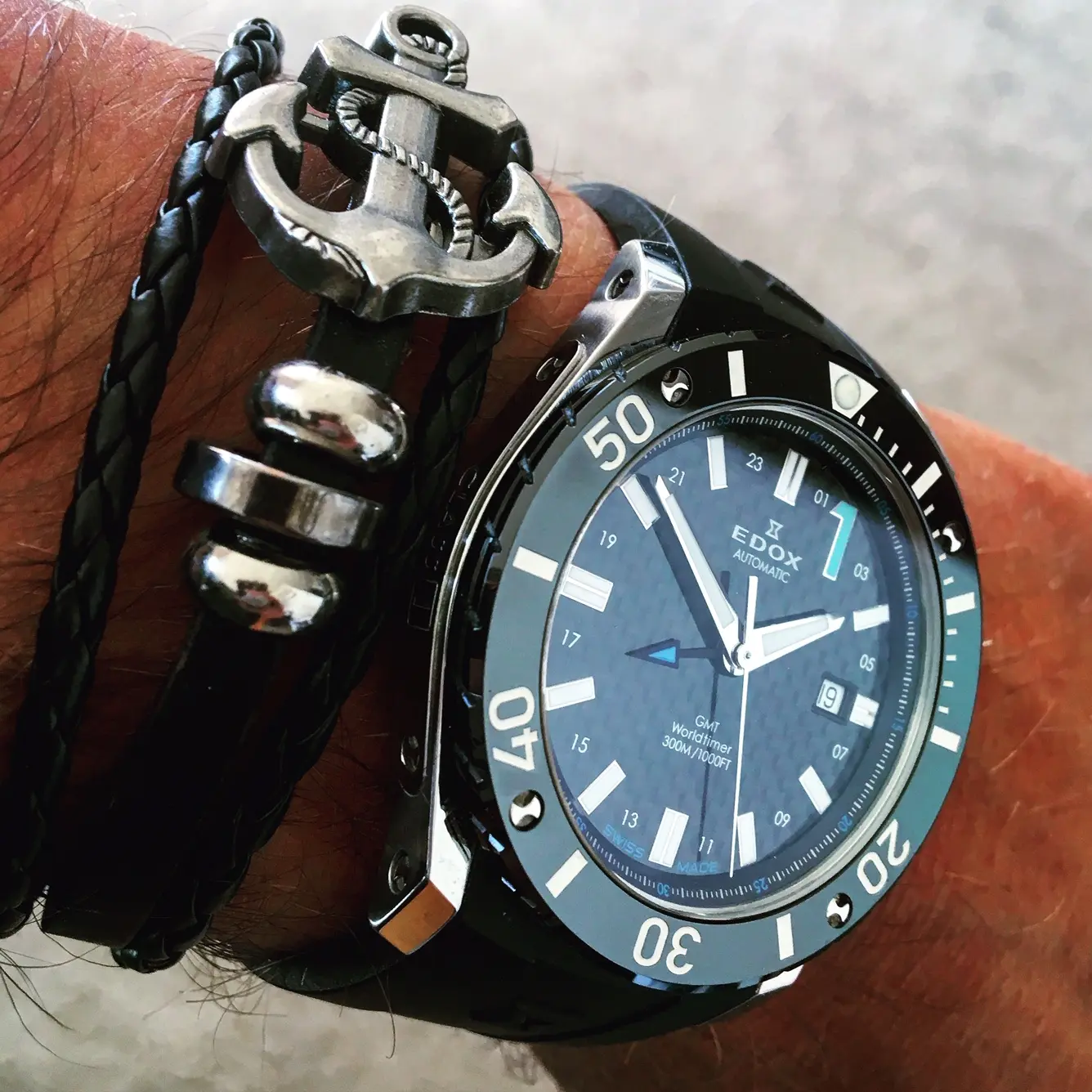
While in modern-day USA or Canada watches are rarely worn by the Millenials, in many countries they are still very much a status symbol and something people, young and old, wear on a regular basis. The good news is that you don’t have to splurge on a good-looking mechanical watch. We already know that many Seiko and Orient watches punch above their price point in terms of looks. Brands like Tissot, Hamilton, Edox, Christopher Ward, Squale, Deep Blue all have some excellent value options in the sub-$1000 category, just to name a few. And if that sounds like a lot to you, remember that your watch will probably be your best investment and a friend for many years, both at home and on your travels. Also remember that there are plenty of watches that cost tens and even hundreds of thousands of dollars out there on the market.
P.S: Guys, if you enjoyed reading this post, I need a favour. I’ve been running this blog for about a year now strictly on my enthusiasm, but if you click on any of the links from this post taking you to the Amazon, even if you don’t buy the actual watches, use the search to buy whatever you happen to need on Amazon. It won’t cost you anything, but I might get a few pennies’ worth of a commission which will help me be more motivated to write future articles. Appreciate your help!
